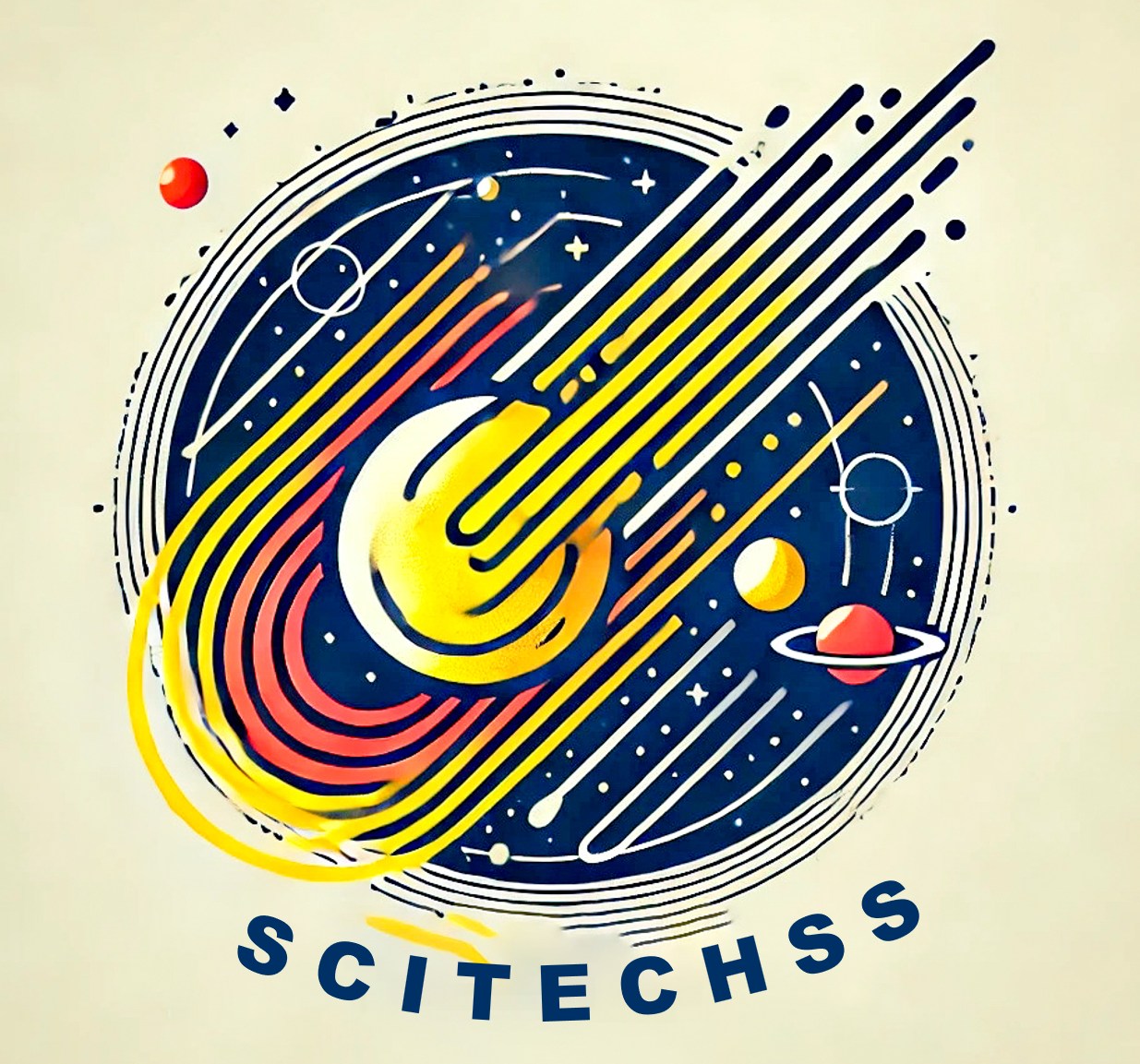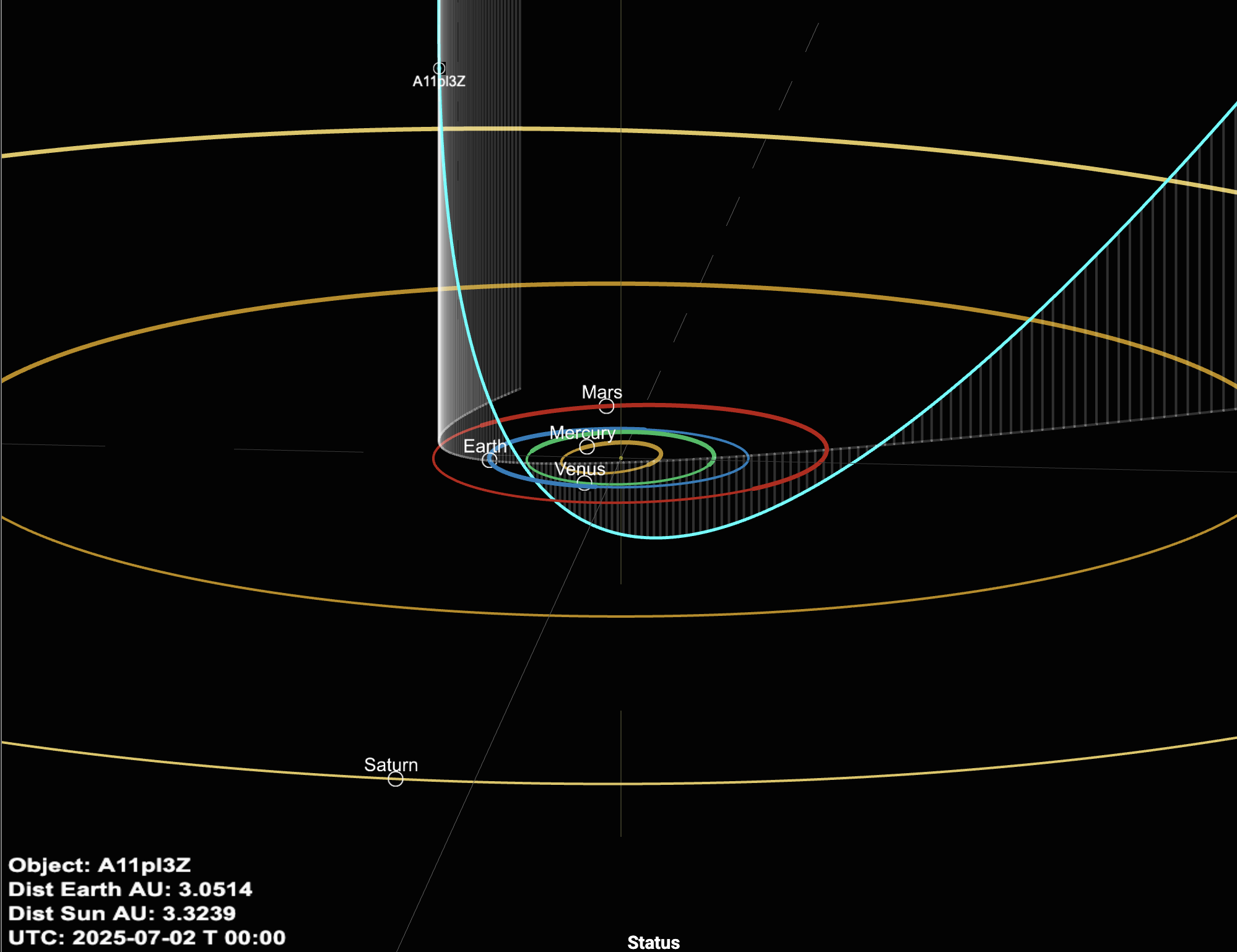A new interstellar visitor, 3I/ATLAS (provisionally designated A11pl3Z), was discovered on July 1, 2025, by the Asteroid Terrestrial-impact Last Alert System (ATLAS) survey, at a heliocentric distance of 4.53 AU. It was confirmed as an interstellar object due to its hyperbolic trajectory, with an eccentricity of 6.1, indicating that it is not gravitationally bound to the Sun. This implies an origin beyond our Solar System. Estimated to be less than 6 km in size, 3I/ATLAS is plunging into the inner Solar System at over 60 km/s. It will reach perihelion on October 29, 2025, at a distance of 1.06 AU (about 203 million kilometres) from the Sun.
During perihelion, it will lie very close to the Sun in the sky—at an elongation of less than 30°—making it unobservable from Earth at that time. However, it can be studied both before perihelion (from discovery through September) and afterwards (starting in November), as we have done and will continue to do as part of the scientific objectives of the SCITECHSS group.
Colleagues of the Solar System Department and members of our group have observed the comet 3I/ATLAS by utilising the powerful X-SHOOTER instrument on the ESO Very Large Telescope (VLT). This is the third interstellar visitor coming to the solar system (1I/‘Oumuamua and 2I/Borisov being the others), and it has become a focal point to understand the diversity of planetary systems beyond our own. The obtained observations have allowed us to provide insights into the comet’s gaseous and refractory composition. Although 3I/ATLAS exhibits activity, spectroscopic analysis reveals a scarcity of common fluorescent emission by gases such as OH and CN, suggesting that water and hydrogen cyanide ices are not yet significantly sublimating at the distance from the Sun (4.4 AU) when the data were acquired.
One of the most striking features of 3I/ATLAS is its reddish hue, a characteristic it shares with certain asteroids and objects in the outer solar system. This red colour hints at either a unique particle size distribution -perhaps dominated by larger dust grains- or extensive space weathering caused by prolonged exposure to interstellar radiation and cosmic rays during its journey through the galaxy. Interestingly, 3I/ATLAS appears significantly redder than its interstellar predecessor, 2I/Borisov, implying distinct surface properties or environmental histories.
The findings, although providing only upper limits on gas production, offer a valuable baseline for monitoring the comet’s evolution as it approaches the Sun. As more data are collected and analysed, researchers hope to further unravel the mysteries of 3I/ATLAS, comparing it with both solar system objects and other interstellar travellers to better understand the building blocks of planetary systems and the processes that shape them across the vastness of space. These ongoing investigations highlight the need for coordinated global efforts to observe and characterise these rare celestial wanderers, providing invaluable clues to the universe’s broader cosmic tapestry.
The publication appeared in Astronomy and Astrophysics this week, and it can be found here.

